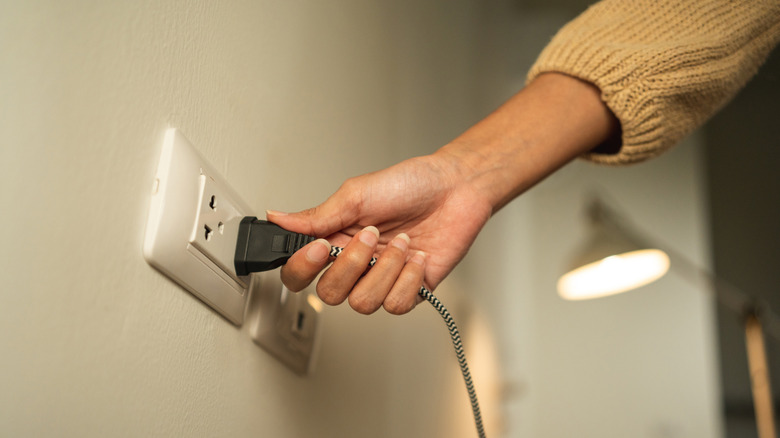Why Do Some Electrical Plugs Have One Bigger Prong?
The world of electrical outlets is far more complicated than you might assume at first glance. There are 15 styles of domestic power plugs used around the world, all of which look unique and may carry different electrical currents based on the country you're in. However, you don't have to leave home to find differences in your electrical plugs. The United States uses Type A and Type B plugs, the latter having a third prong beneath the main two so it can ground your device. But you still might find that two Type A plugs are different; one might have prongs that are the same size, and the other might have one bigger prong. This asymmetry is called polarization, which ensures you can plug the wire into an outlet only one way.
Polarized outlets include any design that allows for only one plug direction. While the United States uses one prong that's bigger than the other, some European countries have prongs set at different angles; meanwhile, other places, like Japan, have uniquely shaped prongs. This is why it's essential to pack electrical adapters if you're moving internationally. You should never try to insert polarized prongs of different sizes into an unpolarized outlet, as this will increase your risk of electric shock by reversing the correct order of the plugs.
Having one bigger prong is important to keep electricity flowing safely
Unpolarized plugs were common early into the life of electrical appliances but largely ceased production during the latter half of the 20th century. Nowadays, having the correct flow for electrical currents is important to keep your devices operational. One prong is considered "hot," meaning it takes electricity from the source; the other prong is "neutral," carrying that current away to the ground. Polarized electrical plugs have one bigger prong to make sure their hot and neutral sides are always aligned. That's one reason why plugging certain appliances into an extension cord is a major fire hazard, as extension cords aren't designed to meet safety standards for that huge power consumption.
There are further ways to protect your home and your appliances from electrical mishaps related to the wrong usage of polarized or unpolarized outlets. One important step could be to replace your standard outlet with a ground fault circuit interrupter (GFCI), which will shut down the flow of electricity to that outlet if an anomaly is detected. Of course, anomalies are less likely when using plugs with polarized prongs, as having one that's bigger than the other ensures the current will flow into the right side. Just be sure to not try anything silly like shaving the bigger prong down to fit an unpolarized outlet; seek out an adaptor if you find your appliances mismatched with your home's wiring.
